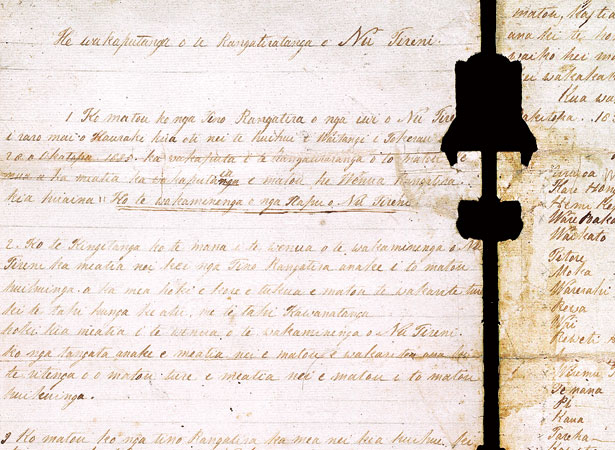
Thirty-four northern chiefs signed He Whakaputanga o te Rangatiratanga o Nu Tireni (the Declaration of Independence of the United Tribes of New Zealand) at a hui called by the British Resident, James Busby.
The previous year many of these chiefs had gathered to choose a national flag to fly on locally owned ships (see 20 March).
In the spring of 1835, Frenchman Charles de Thierry announced his intention to set up a ‘sovereign state’ in Hokianga. Concerned this might provoke intertribal conflict, Busby called a meeting of chiefs whom he persuaded to sign He Whakaputanga. They asked King William IV ‘to be the parent of their infant state [and] its protector from all attempts upon its independence’. As the United Tribes of New Zealand, the signatories would meet at Waitangi annually to frame laws.
The Colonial Office in London promised that the King would protect Māori. Busby eventually acquired 52 signatures to the declaration, all but two from northern chiefs.
The creation of the Confederation gave the United Kingdom influence in New Zealand that it was to exploit to the full at a third meeting of northern chiefs in Waitangi on 6 February 1840.
Read more on NZHistory
Choosing a flag – Taming the frontierThe Treaty in brief – The Treaty in briefTreaty events 1800-49 – Treaty timelinePolitical and constitutional timeline – Political and constitutional timelineUnited Tribes flag – Flags of New ZealandHe Whakaputanga - Declaration of Independence, 1835 – He Whakaputanga - Declaration of Independence
External links
How to cite this page
'He Whakaputanga signed by northern chiefs', URL: https://nzhistory.govt.nz/page/declaration-independence-signed-northern-chiefs, (Ministry for Culture and Heritage), updated 9-Sep-2020

Community contributions